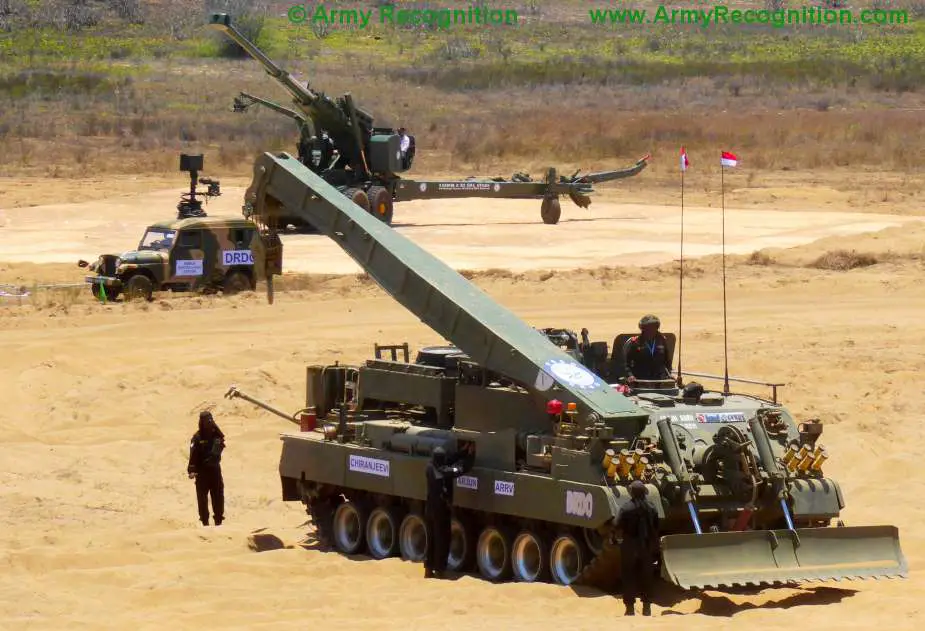Breaking news
Indian Army to modernize fleet with 170 multi-terrain armoured recovery vehicles.
The Indian Army has released a Request for Information (RFI) for the procurement of 170 tracked Armoured Recovery Vehicles (ARVs) designed to operate in various terrains. These new ARVs will replace the existing vehicles built by state-run BEML, which are based on T-72 tank hulls. Several Indian companies are expected to respond to the RFI.
Follow Army Recognition on Google News at this link

Indian Army's future ARV in dynamic demo at DefExpo India 2018 near Chennai (Picture source: Army Recognition)
In a significant move to enhance its operational capabilities, the Indian Army has announced plans to acquire 170 tracked Armoured Recovery Vehicles (ARVs). The RFI was issued this Tuesday, inviting Indian vendors to submit their proposals. The new ARVs are expected to operate in diverse conditions, ranging from plains and deserts to high-altitude mountainous terrains.
The main role of these ARVs is to recover tanks and heavy equipment in case of breakdowns during operations. The current fleet of ARVs, built by state-run BEML, are based on Russian-made T-72 tank hulls and are considered less versatile for the mountainous terrains the Indian Army operates in.
Several Indian companies, including the Kalyani Group, Mahindra, Tata, and L&T, are expected to respond to the RFI. State-run BEML is also among the anticipated contenders.
The Indian Army has specified that the new ARVs should be capable of operating day and night and in various weather conditions such as snow, rain, dust, and sand. In desert terrains, the vehicles should withstand temperatures ranging from 0° to 45° Celsius, while in high-altitude areas, they should operate in temperatures between -20° and 40° Celsius.
The RFI outlines that the ARVs should have a diesel fuel-based engine or a powerful turbocharged system capable of starting in sub-zero conditions. The vehicles should also offer adequate cross-country mobility and protection.
The ARVs are expected to carry at least six persons, including the driver and commander, and should be equipped with utility equipment like cranes, bulldozers, winches, and special maintenance tools. They should have an operational lifespan of at least 32 years and be transportable by existing in-service tank transporter vehicles, IAF transport aircraft, and broad-gauge railway military bogies.
The new ARVs will be equipped with a Remote Controlled Weapon Station (RCWS) featuring an in-service 12.7 mm anti-aircraft machine gun and a smoke grenade launcher. They should also be capable of detecting chemical agents and nuclear radiation to protect the crew.

These new ARVs will replace the existing vehicles built by state-run BEML, which are based on T-72 tank hulls. (Picture source: Wikimedia )


























